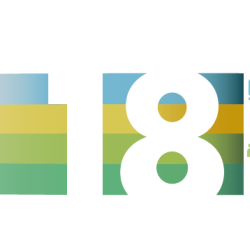Text and Email Notifications Keep Court Users Up to Date
 In today’s increasingly busy and connected world, text and email notifications play a significant role in keeping us up to date. We rely heavily on technology to remind us about upcoming appointments, both work-related and personal, such as going to the doctor or the dentist. Few appointments, though, are as critical as court dates and deadlines. Missing one can reap serious consequences, potentially adding costs and delays, or even changing the legal outcome entirely. One would hope or expect that due to the serious nature of court proceedings that the courts would be as up-to-date—if not ahead of the curve—when it comes to messaging or other communication capabilities that benefit the consumer, but unfortunately that is not the case. However, many courts are beginning to change that reality by offering technologies and apps that can help keep litigants updated about their cases.
In today’s increasingly busy and connected world, text and email notifications play a significant role in keeping us up to date. We rely heavily on technology to remind us about upcoming appointments, both work-related and personal, such as going to the doctor or the dentist. Few appointments, though, are as critical as court dates and deadlines. Missing one can reap serious consequences, potentially adding costs and delays, or even changing the legal outcome entirely. One would hope or expect that due to the serious nature of court proceedings that the courts would be as up-to-date—if not ahead of the curve—when it comes to messaging or other communication capabilities that benefit the consumer, but unfortunately that is not the case. However, many courts are beginning to change that reality by offering technologies and apps that can help keep litigants updated about their cases.
Bills in three states—Tennessee, Massachusetts, and Colorado—were recently filed that would require state courts to develop a text reminder system for litigants in criminal cases. In fact, notifying court users about pending court appearances and other developments just became standard practice statewide in Florida criminal cases after a successful pilot program in three counties. Florida’s E-Notify lets people register for free and customize how and when they are alerted about upcoming court events. “Technology enhances our operations,” said Polk County Court Clerk Stacy Butterfield, President of Florida Court Clerks & Comptrollers, “but most importantly, it makes our customers’ lives easier and provides them with more convenient access to our services.”
State civil court systems across the country are also embracing electronic notifications. In a recent blog post, we highlighted Cuyahoga County (OH) Domestic Relations Court’s CourtConnect app, which allows users to receive push notifications that tell them when documents in their case are filed or due, and when hearings are scheduled or postponed. Additionally, IAALS’ publication Eighteen Ways Courts Should Use Technology to Better Serve Their Customers stresses the need for enabling automated court messaging to customers and highlights the 22nd Judicial Circuit of McHenry County, Illinois, and its text/email notification program.
This desire to increase communication with court customers through technology is not siloed within individual courts but comes from the Conference of Chief Justices (CCJ) itself. In 2016, the CCJ and the Conference of State Court Administrators supported the recommendations by the Civil Justice Improvements Committee, which include courts taking all necessary steps to increase convenience to litigants by simplifying the court-litigant interface and creating on-demand court assistance services. Three years later, the CCJ also supported the Family Justice Initiative Principles, which encourage courts to offer parties digital solutions and virtual means of engaging with the court.
Leadership from the top courts in the nation has made it clear that the justice system needs to adapt to existing technologies in order to work better with its customers. As shown here, there are a number of courts that have taken up this charge by implementing text reminders and push notification systems to remind litigants about key steps in their case. And as more courts implement these and other technological systems that increase convenience to court users, more people will be able to receive the justice they deserve.



